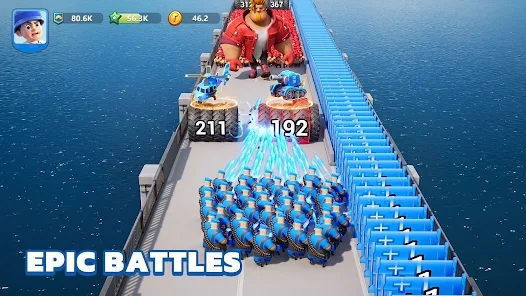The Evolution of Building Games: More Than Just Sandboxes
Let’s
face
it:
“Building
games"
used to mean playing with virtual LEGOs — fun, sure, but not groundbreaking.1 However,2 in 2025, the concept has evolved beyond just stacking blocks. Whether you're designing futuristic metropolises or managing resource chains for colonies on Mars — the latest **building simulation** experiences demand creativity and strategic finesse, often in equal doses. - The genre blends elements of management, creativity & problem solving
- New games offer advanced AI tools, better resource economy systems, & even multi-tier collaboration features
- Building mechanics are becoming hybrid experiences that blend simulation with tactical gameplay
Digital Bricks & Brains: Why Building Games Matter Now
It’s not just about throwing walls up anymore — the genre’s appeal now leans on a curious combo of chill gameplay with just enough cognitive load. Think about EA Sports FC 24 Wonderkids: players love uncovering talents in a system. Now apply that idea to cities: discover patterns in how populations grow, how traffic routes bottleneck, how trade flows can optimize — all the while pretending it’s just for fun. That explains why 8.2M players have jumped into titles like **Blockcraft Odyssey 2075** or **Neotectura: Mars Edition**. They don’t feel like homework, but you *learn* something every time you play.Building Games Trend Table – 2025 Edition:
| Title | Main Feature | Strategic Complexity |
|---|---|---|
| Urban Craft | Near-real time economy engine | Moderate |
| Blocksmith: Space Forge | Multiplanet base optimization tooling | High |
| Axiom Build & Rule | Player-governed laws + taxation | Crazy high |
What’s the Best Building Game in 2025? Top Ten Breakdown
Here's our breakdown of the most influential titles this year (and some wild cards). No, you won’t agree. You'll probably write a reddit thread about #5 and call us “biased sim snobs."- Axiom Build & Rule — Rule a digital kingdom, pass taxes, and manage dissent with player-driven laws.
- DreamForge: Beyond the Glade — Cozy worldcraft game with subtle economy depth; plays like a warm tea after coding all day.
- Terraform Rising—Mars settlement builder with real physics for atmospheric engineering buffs.
But the real shock? One title took everyone by surprise: “CityScape 8K," which merged **building elements** with live-stream economy challenges. It allows streamers to run real time trade policy in-game — think SimCity meets TikTok. And people are weirdly into it. Like *cult-like weird* into it.
🔥 Hot Take
- In Poland, over 2.3M gamers are opting for "DreamForge: Beyond the Glade" to unwind. Its Polish UI and localization have helped a ton in regional growth.
- Did sweet potato really make the list? Surprisingly yes! “TuberTown," a small-town economic simulation game with obscure tuber markets, has been a regional breakout hit. Yes. You can farm sweet potatoes & export them via in-game shipping routes.
Fresh Out The Oven: Polish Players & Their Picks
Let’s shift to a regional flavor. For Polish gaming audiences, **the building game explosion has matched local appetite for narrative-rich simulation gameplay with a touch of economy-based realism**.- Localization wins like native UI, Polish voice acting, and themed city packs are helping games stick around. A great example is "TwinSpire: Wrocław Reconstruction" — an open world sandbox that lets users redesign old Soviet architecture using real data and maps of Wrocław.
- New games are also adopting mods that enable community translations fast. The dev behind Terraform Rising released the language toolkit in early 2025 and gained 240K Polish users overnight.
- Streaming is driving visibility — streamers like Miku and Gamedrive have helped popularize obscure city-building titles, especially in the 16-24 age demographic.
Looking at the Future: 3 Reasons the Building Game Trend isn’t Fading
Despite what you think (or how much you’ve grown weary of building fences), building simulators aren’t slowing down.Let’s talk real trends:
- Games now allow multiplayer economic ecosystems – where one player designs an economy while another breaks it, all for fun. That's next-gen.
- New tools powered by generative AIs let users import real 3D scanned landscapes — yes, including actual cities like Gdańsk— into custom levels
- Educational institutions (and Polish startups too) are testing gamification with **sim-style buildables as real teaching methods** in economics & spatial design
In Summary
2025 isn’t a year where building games just level up; it’s a phase-shift from creativity sandboxes into fully-fledged playgrounds of strategic experimentation, narrative building, and soft-skill simulation — whether we want to admit it or not.The next big question is: will these experiences keep evolving — and more intriguingly — what will happen to our brains after a year of playing Mars colony planners, city governors, and potato market traders. One thing's clear: creativity doesn't just build towers; it rebuilds the player, pixel by pixel.



